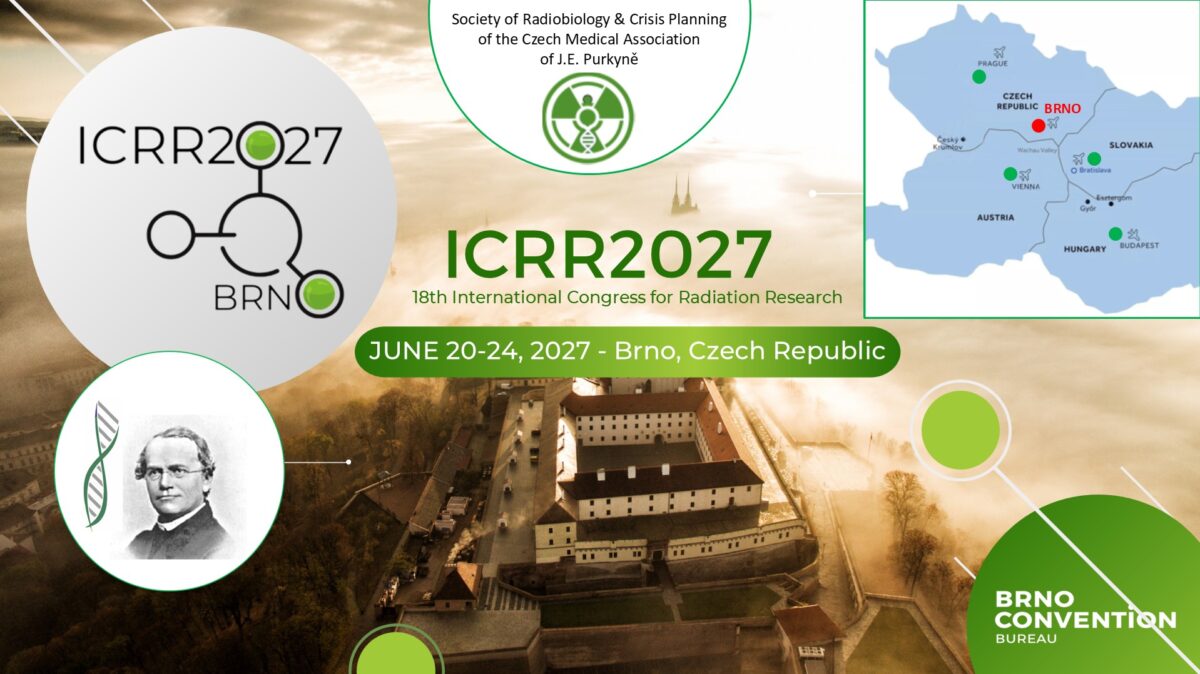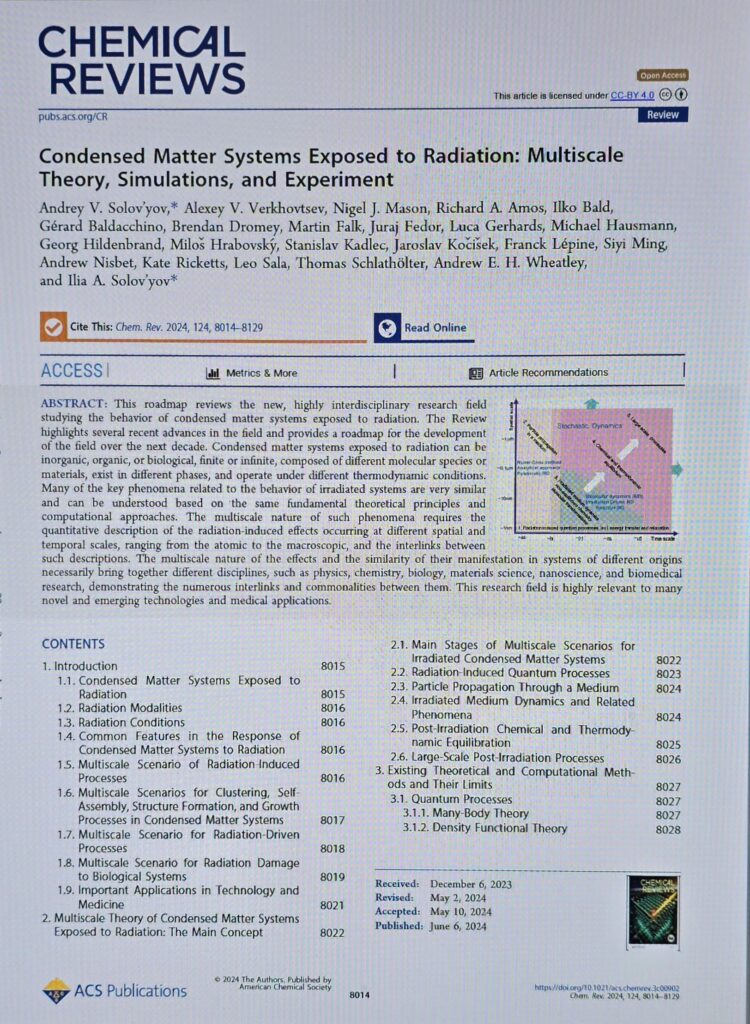
Condensed Matter Systems Exposed to Radiation: Multiscale Theory, Simulations, and Experiment
Solov’yov, A. V., Verkhovtsev, A. V., Mason, N. J., Amos, R. A., Bald, I., Baldacchino, G., Dromey, B., Falk, M., Fedor, J., Gerhards, L., Hausmann, M., Hildenbrand, G., Hrabovský, M., Kadlec, S., Kočišek, J., Lépine, F., Ming, S., Nisbet, A., Ricketts, K., Sala, L., Schlathölter, T., Wheatley, A. E. H., & Solov’yov, I. A. (2024). Condensed Matter Systems Exposed to Radiation: Multiscale Theory, Simulations, and Experiment. Chemical Reviews, 124(13), 8014-8129. IF = 51.5 (Q1).
Free download: https://doi.org/10.1021/acs.chemrev.3c00902
This roadmap reviews the new, highly interdisciplinary research field studying the behavior of condensed matter systems exposed to radiation. The Review highlights several recent advances in the field and provides a roadmap for the development of the field over the next decade.
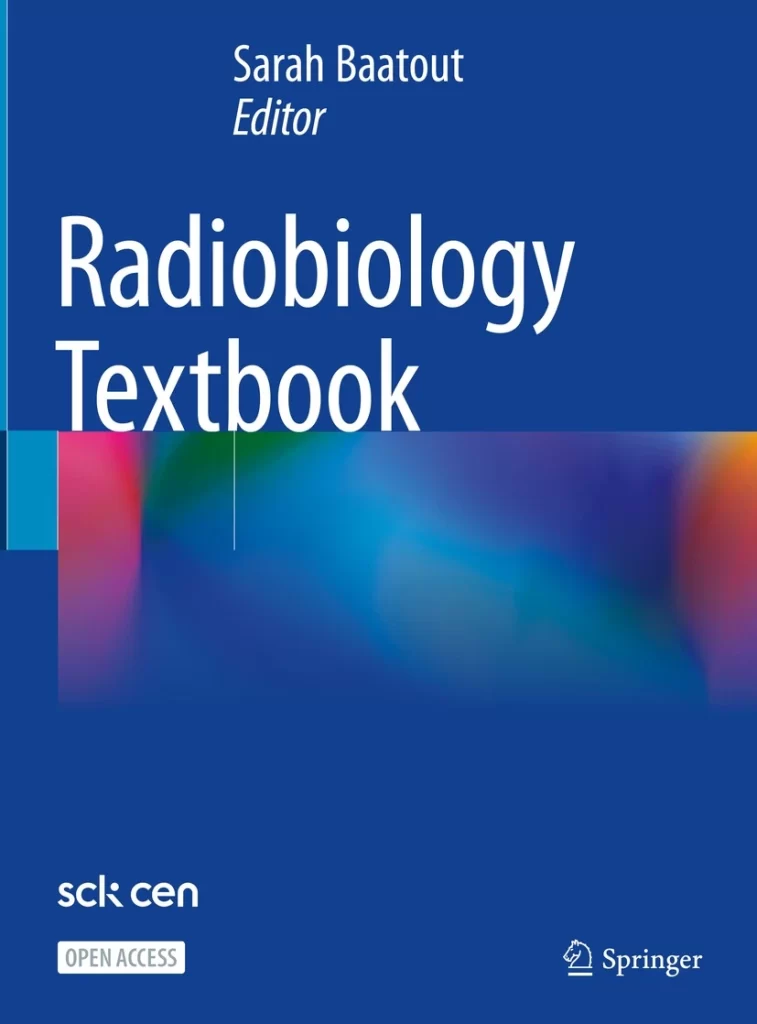
Radiobiology Textbook
Baatout, S. (Ed.). (2021). Radiobiology textbook. Springer Cham. https://doi.org/10.1007/978-3-031-18810-7
Free download: https://link.springer.com/book/10.1007/978-3-031-18810-7
https://www.amazon.co.uk/Radiobiology%E2%80%A6/dp/3031188128
This open access textbook focuses on the various aspects of radiobiology. The goal of radiobiological research is to better understand the effects of radiation exposure at the cellular and molecular levels in order to determine the impact on health. This book offers a unique perspective, by covering not only radiation biology but also radiation physics, radiation oncology, radiotherapy, radiochemistry, radiopharmacy, nuclear medicine, space radiation biology & physics, environmental and human radiation protection, nuclear emergency planning, molecular biology and bioinformatics, as well as the ethical, legal and social considerations related to radiobiology. This range of disciplines contributes to making radiobiology a broad and rather complex topic. This textbook is intended to provide a solid foundation to those interested in the basics and practice of radiobiological science. It is a learning resource, meeting the needs of students, scientists and medical staff with an interest in this rapidly evolving discipline, as well as a teaching tool, with accompanying teaching material to help educators.
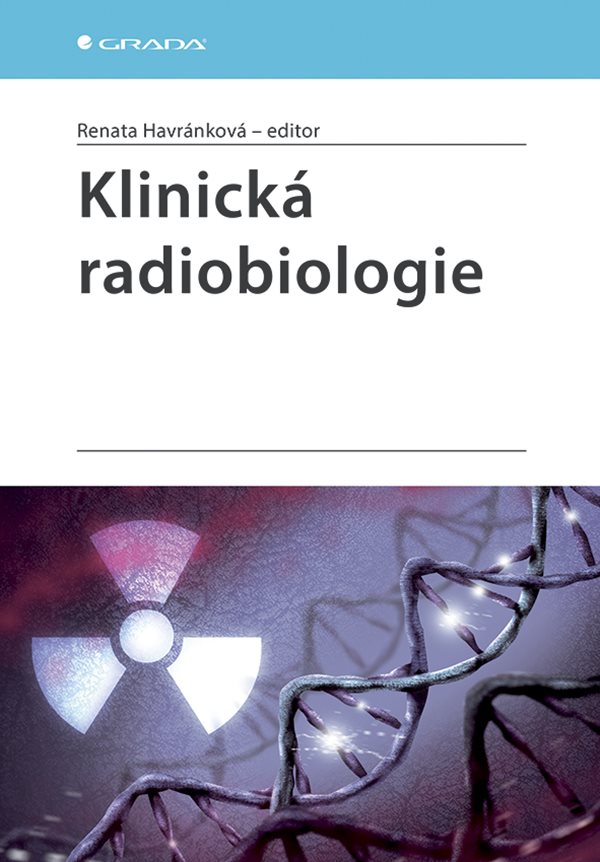
Klinická radiobiologie
Havránková, R. (Ed.). (2020). Klinická radiobiologie (Čuprová J., Falk M., Falková I., Freitinger Skalická Z., Grebenyuk A.N., Havránek J., Horáček J.M., Jebavý L., Kormúth E., Navrátil L., & Žák P. authors). Grada.
Zdroj: Nakladatelství Grada (tištěná kniha i elektronické verze)
Publikace přináší ucelený pohled na celý obor – od nejnovějších poznatků vlivu ionizujícího záření na subcelulární úrovni před důsledky poškození na tkáňové úrovni po klinické následky (nemoc z ozáření).
Zabývá se problematikou ozářených, respektive kontaminovaných osob, diagnostikou a specializovanou léčbou v centrech k tomu určených. Pozornost je věnována rovněž možnostem využití radioprotektivních látek, včetně jejich nežádoucích účinků.
V neposlední řadě se čtenář seznámí s úkoly integrovaného záchranného systému v případě radiačního ohrožení a konkrétními radiačními nehodami a haváriemi, které v minulosti ohrozily lidstvo i životní prostředí.
Autorský kolektiv se skládá z lékařů a specialistů v oblasti radiobiologie, molekulární biologie, ionizujícího záření, radiační ochrany, specialistů v oboru vnitřní lékařství a medicíny katastrof. Publikace spojuje vlastní zkušenosti autorů s poznatky získanými na základě studia literatury.
Dvojčíslo 7 + 8 (2020) Časopis lékařů Českých publikované SRKP ČLS JEP v kooperaci s radioterapeuty a onkology, dedikované biologickým účinkům ionizujícího záření (Ed. Martin Falk) a částečně též aktuální krizové situaci vyvolané pandemií viru SARS-CoV-2
- Editorial (Falk M)
- Klíčové momenty v historii československé radiobiologie (Navrátil L. et al.)
- Biologické účinky ionizujícího záření (Havránková R.)
- Moderní trendy v radioterapii (Šlampa P.)
- Reparace DNA v buňkách nádorů hlavy a krku a možnosti využití monitorování tohoto procesu pro odhad radiorezistence jednotlivých nádorů a výběr optimální primární léčby (Horáková Z. et al.)
- Trendy ve farmakologické stimulaci regenerace ionizujícím zářením poškozeného savčího organismu (Hofer M.)
- Stáří není nemoc: Vývoj hladiny ochranných protilátek proti koronaviru SARS-CoV-2 u seniorů z Domova Břevnice (Fejt V. et al.)
- Principy a výhledy vakcinace proti viru SARS-CoV-2 (Smetanová J. et al.)
- Roční období, vitamin D a COVID-19 (Kopeček M., Höschl C.)
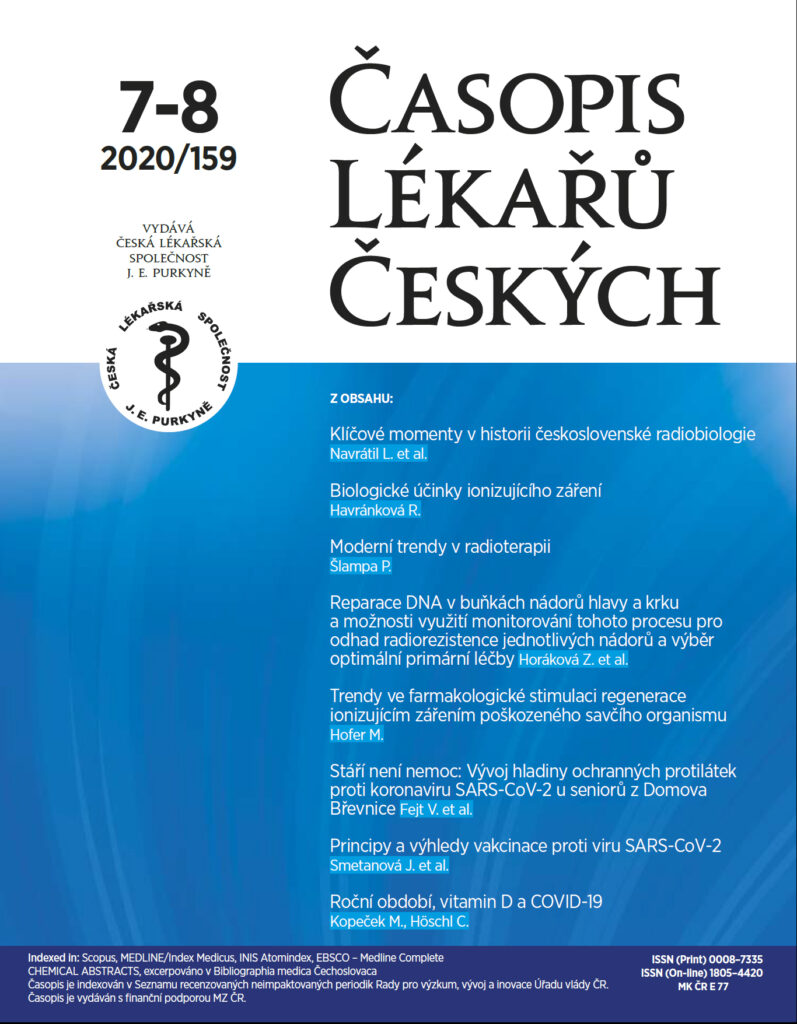
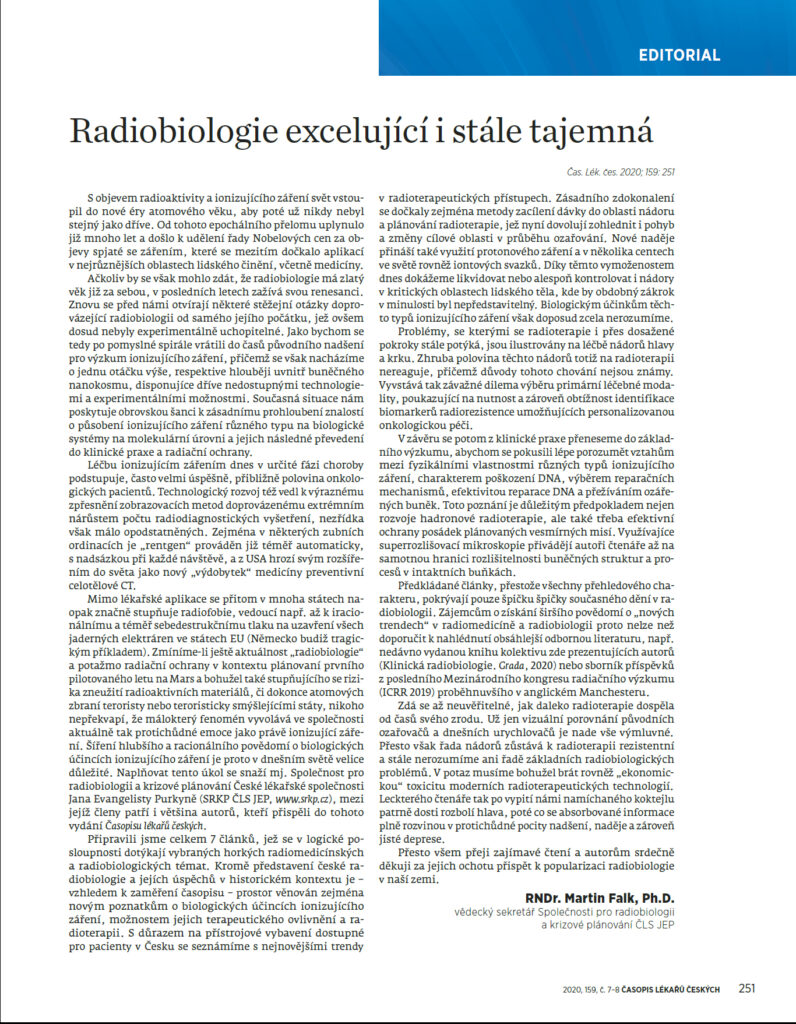
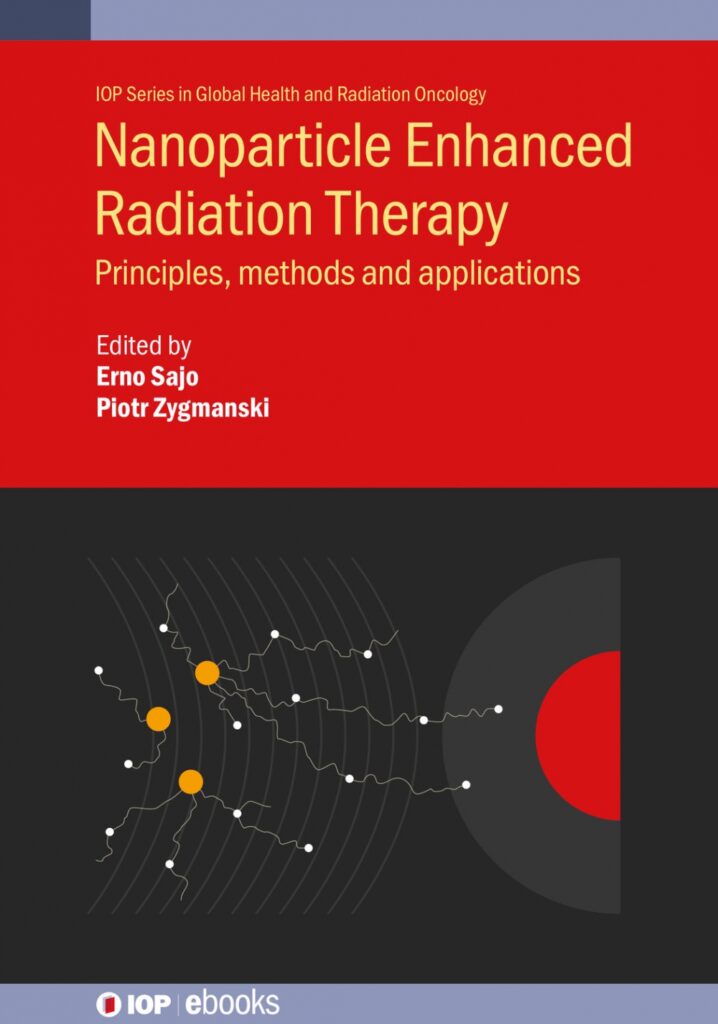
Nanoparticle Enhanced Radiation Therapy
Falk M, Wolinsky M, Veldwijk MR, Hildenbrand G and Hausmann M. Gold nanoparticle enhanced radiosensitivity of cells: considerations and contradictions from model systems and basic investigations of cell damaging for radiation therapy. In Nanoparticle Enhanced Radiation Therapy Principles, methods and applications, 2020, Erno Sajo and Piotr Zygmanski (eds.), IOP Publishing Ltd
Improved targeting of abnormal cells and tissue in the radiotherapy of cancer has been a long-standing goal of researchers. The central purpose of nanoparticle-enhanced radiotherapy (NPRT) is to more precisely control where the radiation dose is delivered, desirably with subcellular precision, provided we can find a method to bring the nanoparticles to target as well as control their concentration and size distribution.
The contents within this book will cover the rationale and fundamental principles of NPRT, optimal nanoparticle sizes, concentrations, design and fabrication, effective nanoparticle delivery methods, emerging clinical applications of NRT modalities, treatment planning and quality assurance and the potential of NPRT in global health. This volume will serve as a resource for researchers, educators and industry, and as a practical guide or comprehensive reference for students, research trainees and others working in cancer nanomedicine.
Key Features
- Covers the most important advances in nanoparticle-aided radiation therapy over the last few decades
- Features contributions from leaders in the field
- Focuses first on the fundamentals of radiosensitization, then it continues with imaging methods and concludes with various clinical applications
2024
Perecko T, Pereckova J, Hoferova Z, Falk M. Cell-type specific anti-cancerous effects of nitro-oleic acid and its combination with gamma irradiation. Biol Chem. 2023 Sep 15. doi: 10.1515/hsz-2023-0150 (IF 4. 7 / Q2)
2023
Weidner J, Neitzel Ch, Gote M, Deck J, Küntzelmann K, Pilarczyk G, Falk M*, Hausmann M. Image-free analysis of the nano-organization of chromatin, proteins, and membrane molecules: A comprehensive set of software tools. CSBJ 2023, 21:2018–2034 https://doi.org/10.1016/j.csbj.2023.03.009 (IF 7.271 / Q1)
Erenpreisa J, Giuliani A, Yoshikawa K, Falk M, Hildenbrand G, Salmina K, Freivalds T, Vainshelbaum N, Weidner J, Sievers A, Pilarczyk G, and Hausmann M. Spatial-temporal genome regulation in stress-response and cell-fate change. IJMS 2023, 24(3):2658; https://doi.org/10.3390/ijms24032658 (IF 6.208 / Q1).
2022
Perecko, T., Hoferova, Z., Hofer, M., Pereckova, J., Falk, M. Administration of nitro-oleic acid mitigates radiation-induced hematopoietic injury in mice. Life Sciences 2022, 310, art. no. 121106. DOI: 10.1016/j.lfs.2022.121106. (IF 6.78 / Q1) (funding No. 19-09212S).
Pereckova, J., Martiniakova, S., Payer, J., Falk, M., Killinger, Z., Perecko, T. ANALYSIS OF HEMATOLOGICAL PARAMETERS IN RHEUMATOID ARTHRITIS PATIENTS RECEIVING BIOLOGICAL THERAPY: CONTRIBUTION TO PREVENTION OF AVOIDABLE HEMATOLOGICAL COMPLICATIONS. EXCLI Journal 2022, 21, pp. 580-594. DOI: 10.17179/excli2022-4702. (IF 4.022 / Q2)
Zadneprianetc M, Boreyko A, Jezkova L, Falk M, Ryabchenko A, Hramco T, Krupnova M, Kulikova E, Pavlova A, Shamina D, Smirnova E & Krasavin E. Clustered DNA Damage Formation in Human Cells after Exposure to Low- and Intermediate-Energy Accelerated Heavy Ions. Physics of Particles and Nuclei Letters 2022, 19:440–450. (IF 0.57 / h=21)
Dobešová L, Gier T, Kopečná O, Pagáčová E, Vičar T, Bestvater F, Toufar J, Bačíková A, Kopel P, Fedr R, Hildenbrand G, Falková I, Falk M (corresp. au.), and Hausmann M (corresp. au.). Incorporation of Low Concentrations of Gold Nanoparticles: Complex Effects on Radiation Response and Fate of Cancer Cells. Pharmaceutics 2022, 14(1), 166; https://doi.org/10.3390/pharmaceutics14010166. (IF 6.525 / Q1).
Falk M, Vičar T, Gumulec J, Falková I, Kopečná O, Pagáčová E, Kolář R, Toufar J, Parsimehr E, Dobešová L, Huščavová E. NEW SOFTWARE BASED ON ARTIFICIAL NEURAL NETWORKS FOR AUTOMATIC QUANTIFICATION OF DNA RADIATION DAMAGE AND VICTIM TRIAGE. Proceedings of the HAZMAT PROTECT 2022– 4th Scientific Conference on CBRN Protection, 2022, pp 14 – 23, ISBN 978-80-11-01902-0. Available in: https://hazmat-protect.sujchbo.cz/archiv/hazmat-protect-2022/ (invited)
2021
Vicar T, Gumulec J, Kolar R, Kopecna O, Pagacova E, Falkova I, Falk M (corresp. au.). DeepFoci: Deep learning-based algorithm for fast automatic analysis of DNA double-strand break ionizing radiation-induced foci. Comput Struct Biotechnol J. 2021;19:6465-6480. doi: 10.1016/j.csbj.2021.11.019. eCollection 2021.(IF 7.271 / Q1)
Hahn H, Neitzel Ch, Kopečná O, Heermann DW, Falk M, Hausmann M. Topological Analysis of gH2AX and MRE11 Clusters Detected by Localization Microscopy during X-ray-Induced DNA Double-Strand Break Repair. Cancers, 2021, 13(21), 5561. (IF 6.639 / Q1)
Hausmann M, Falk M, Neitzel Ch, Hofmann A, Biswas A, Gier T, Falkova I, Heermann DW, Hildenbrand G. Elucidation of the clustered nano-architecture of radiation-induced DNA damage sites and surrounding chromatin in cancer cells: A single molecule localization microscopy approach. Int J Mol Sci, 2021;22(7), Article number 3636. (IF 6.208 / Q1)
Falk M (corresp. au.), Hausmann M. A Paradigm Revolution or Just Better Resolution—Will Newly Emerging Superresolution Techniques Identify Chromatin Architecture as a Key Factor in Radiation-Induced DNA Damage and Repair Regulation? Cancers 2021, 13, 18. https://dx.doi.org/10.3390/cancers13010018. (IF 6.126 / Q1)
Pereckova J. et al. Nitro‐oleic acid inhibits stemness maintenance and enhances neural differentiation of mouse embryonic stem cells via stat3 signaling. Int J Mol Sci, 2021;22(18), Article number 9881. (IF 6.208 / Q1)
2020
Hausmann M*, Neitzel Ch, Bobkova E, Nagel D, Hofmann A, Chramko T, Smirnova E, Kopečná O, Pagáčová E, Boreyko A, Krasavin E, Falkova I, Heermann DW, Pilarczyk G , Hildenbrand G, Bestvater F, Falk M* (*corresp. au). Single Molecule Localization Microscopy Analyses of DNA-Repair Foci and Clusters Detected along Particle Damage Tracks. Front. Phys. 2020, doi: 10.3389/fphy.2020.578662 (IF 2.638 / Q2)
Michaelidesová A, Vachelová J, Klementová J, Urban T, Pachnerová Brabcová K, Kaczor S, Falk M, Falková I, Depeš D, Vondráček V, Davídková M. In Vitro Comparison of Passive and Active Clinical Proton Beams. Int J Mol Sci. 2020;21(16):5650. doi: 10.3390/ijms21165650. (IF 6.208 / Q1)
Pagáčová E, Štefančíková L, Schmidt-Kaler F, Hildenbrand G, Vičar T, Depeš D, Lee JH, Bestvater F, Lacombe S, Porcel E, Roux S, Wenz F, Kopečná O, Falková I, Hausmann M, Falk M. Challenges and contradictions of metal nano-particle applications for radio-sensitivity enhancement in cancer therapy. J Mol Sci. 2020; Nanotechnology in Cancer Treatment (the article reprint from 2019;20(3):8173. doi:10.3390/ijms20030588 selected to be involved in a special IJMS collection Nanotechnology in Cancer Treatment). Image gained by the authors has been selected as the COVER IMAGE (IF 6.208 / Q1)
Luxford TFM, Pshenichnyuk SA*, Asfandiarov NL, Perečko T, Falk M* (*corresp. au), Kočišek J*. 5-Nitro-2,4-Dichloropyrimidine as an Universal Model for Low-Energy Electron Processes Relevant for Radiosensitization. Int J Mol Sci. 2020 Oct 31;21(21):8173. doi: 10.3390/ijms21218173. PMID:33142925; PMCID: PMC7662275. (IF 6.208 / Q1)
Raudenská M., Svobodová M., Gumulec J., Falk M., Masařík M. The importance of cancer-associated fibroblasts in the pathogenesis of head and neck cancers | [Význam fibroblastů asociovaných s nádorem při patogenezi karcinomů v oblasti hlavy a krku]. Klinická onkologie (Clinical Oncology) 2020; 33(1): 39-48.
Falk M* and Hausmann M (*corresp. au.). New discoveries on cell and chromatin damage by different types of ionizing radiation in the era of advanced optical microscopy and nanoscopy [Nové poznatky o poškození buněk a chromatinu (DMA) různými druhy ionizujícího záření v éře pokročilé optické mikroskopie a nanoskopie]. Cas Lek Cesk. 2020, 7-8:286-29.
Horáková Z., Falk M*, Kopečná O., Pagáčová E., Gumulec J., Masařík M., Falková I., Raudenská M., Bačíková A., Vičar T., et al (*corresp. au.). Head and neck tumor radiotherapy and DNA repair variability of these tumors [Radioterapie nádorů hlavy a krku a variabilita reparační kapacity DNA těchto nádorů]. Cas Lek Cesk. 2020, 7-8:268-274.
Falk M. Editorial / Radiobiology excellenting but still mysterious [Radiobiologie excelující i stále tajemná]. Cas Lek Cesk. 2020, 7-8:251
Hausmann M, Neitzel Ch, Hahn H, Winter R, Falkova I, Heermann DW, Pilarczyk G, Hildenbrand G, Scherthan H and Falk M. Space and Time in the Universe of the Cell Nucleus after Ionizing Radiation Attacks: A Comparison of Cancer and Non-Cancer Cell Response. Med. Sci. Forum 2021, 3, 15. https://doi.org/10.3390/IECC2021-09219
2019
Pagáčová E, Štefančíková L, Schmidt-Kaler F, Hildenbrand G, Vičar T, Depeš D, Lee JH, Bestvater F, Lacombe S, Porcel E, Roux S, Wenz F, Kopečná O, Falková I, Hausmann M, Falk M. Challenges and Contradictions of Metal Nano-Particle Applications for Radio-Sensitivity Enhancement in Cancer Therapy. Int J Mol Sci. 2019 Jan 30;20(3). doi: 10.3390/ijms20030588.(IF 6.208 / Q1)
Hofer M., Hoferová Z. and Falk M. Brief story on prostaglandins, inhibitors of their synthesis, hematopoiesis, and acute radiation syndrome. 2019; 24(22). pii: E4019. doi:10.3390/molecules24224019. (IF 4.411 / Q1-Q2)
2018
Kratochvílová I, Kopečná O, Bačíková A, Pagáčová E, Falková I, Follett SE, Elliott KW, Varga K, Golan M, Falk M*. Changes in Cryopreserved Cell Nuclei Serve as Indicators of Processes during Freezing and Thawing. Langmuir. 2018. doi: 10.1021/acs.langmuir.8b02742.(IF 4.331 / Q1)
Jezkova L. et al. (Falk M corresponding Au). Particles with similar LET values generate DNA breaks of different complexity and reparability: a high-resolution microscopy analysis of γH2AX/53BP1 foci. Nanoscale. 2018, 10, 1162-1179. DOI 10.1039/C7NR06829H. IF 8.307 / Q1, decile 1
Falk M*, Falková I, Kopečná O, Bačíková A, Pagáčová E, Šimek D, Golan M, Kozubek S, Pekarová M, Follett SE, Klejdus B, Elliott KW, Varga K, Teplá O, Kratochvílová I*. Chromatin architecture changes and DNA replication fork collapse are critical features in cryopreserved cells that are differentially controlled by cryoprotectants. Sci Rep. (Nature) 2018;8(1):14694. doi: 10.1038/s41598-018-32939-5.(IF 4.996 / Q1, decile 1)
Bobkova E, Depes D, Lee J-H, Jezkova L, Falkova I, Pagacova E, Kopecna O, Zadneprianetc M, Bacikova A, Kulikova E, Smirnova E, Bulanova T, Boreyko A, Krasavin E, Wenz F, Bestvater F, Hildenbrand G, Hausmann M* and Falk M.* Recruitment of 53BP1 Proteins for DNA Repair and Persistence of Repair Clusters Differ for Cell Types as Detected by Single Molecule Localization Microscopy. Int. J. Mol. Sci. 2018;19(12). doi: 10.3390/ijms19123713. PubMed PMID: 30469529; PubMed Central PMCID:PMC6321197. (IF 6.208 / Q1)
Golan M, Pribyl J, Pesl M, Jelinkova S, Acimovic I, Jaros J, Rotrekl V, Falk M, Sefc L, Skladal P, Kratochvilova I. Cryopreserved cells regeneration monitored by atomic force microscopy and correlated with state of cytoskeleton and nuclear membrane. IEEE Trans Nanobioscience 2018; doi:10.1109/TNB.2018.2873425. (IF 3.206 / Q1)
Hofer M, Hoferová Z, Gruzdev A, Dušek L, Falk M. Impaired post-irradiation survival of cyclooxygenase-2-deficient mice. Physiol Res. 2018;67(5):809-812. (IF 2.139 / Q2)
Daniel Depes, Jin-Ho Lee, Elizaveta Bobkova, Lucie Jezkova, Iva Falkova, Felix Bestvater, Eva Pagacova, Olga Kopecna, Mariia Zadneprianetc, Alena Bacikova, Elena Kulikova, Elena Smirnova, Tatiana Bulanova, Alla Boreyko, Evgeny Krasavin, and Michael Hausmann and Martin Falk. Eur. Phys. J. D 2018;72:158. doi.org/10.1140/epjd/e2018-90148-1. (IF 1.611 / Q3) Hofer M, Hoferová Z, Gruzdev A, Dušek L, Falk M. Impaired post-irradiation survival of cyclooxygenase-2-deficient mice. Physiol Res. 2018 Jul 25. [Epub ahead of print] PubMed PMID: 30044110. (IF 2.139 / Q2)
2017
Falk M*. Nanodiamonds and Nanoparticles as Tumor Cell Radiosensitizers – Promising Results but Still Obscure Mechanism of Their Action. Annals of Translational Medicine 2017;5(1):18 (INVITED ARTICLE; (IF 3.689 / Q1)
Kratochvílová I, Golan M, Pomeisl K, Richter, Sedláková S, Šebera J, Mičová J, Falk M, Falková I, Řeha D, Elliott KW, Varga K, Šimek D. Theoretical and experimental study of the antifreeze protein AFP752, trehalose and dimethyl sulfoxide cryoprotection mechanism: correlation with cryopreserved cell viability RSC Advances. 2017, 7 (1), pp. 352-360. DOI: 10.1039/c6ra25095e. (IF 4.036 / Q1-2)
Lukášová E, Kovařík A, Bačíková A, Falk M, and Kozubek S. Loss of lamin B receptor is an essential attribute of cellular senescence. Biochemical Journal 2017;474(2):281-300 (IF=3.857 / Q1-2)
Hofer, M., Hoferová, Z., Falk, M Pharmacological modulation of radiation damage. Does it exist a chance for other substances than hematopoietic growth factors and cytokines? Int. J. Mol. Sci. 2017;18(7), art. no. 1385. DOI: 10.3390/ijms18071385. (IF 6.208 / Q1)
Hofer, M., Hoferová, Z., Depeš, D., Falk, M. Combining pharmacological countermeasures to attenuate the acute radiation syndrome-A concise review. Molecules 2017;22(5), art. no. 834. DOI:10.3390/molecules22050834. (IF 4.411 / Q1-Q2)
Falk M*, Horakova Z, Svobodova M, Masarik M, Kopecna O, Gumulec J, Raudenska M, Depes D, Bacikova A, Falkova I, Binkova H. gH2AX/53BP1 foci as a potential pre-treatment marker of HNSCC tumors radiosensitivity – preliminary methodological study and discussion. Eur. Phys. J. D 2017;71:241. DOI: 10.1140/epjd/e2017-80073-2. (IF 1.611 / Q3)
2016
Stefancikova L*, Lacombe S, Salado D, Porcel E, Pagacova E, Tillement O, Lux F, Depes D, Kozubek S, Falk M*. Effect of Gadolinium-based nanoparticles on nuclear DNA damage and repair in glioblastoma tumor cells. J Nanobiotechnol. 2016;14(1):63. (IF 10.435 / Q1)
Hofer M, Falk M*, Komůrková D, Falkova I, Bačíková A, Klejdus B, Pagáčová E, Štefančíková L, Weiterová L, Angelis K, Kozubek S, Dusek L, Galbavý Š. New two faces of amifostine: protector from DNA damage in normal cells and inhibitor of DNA repair in cancer cells. J Med Chem. 2016;59(7):3003-17. doi: 10.1021/acs.jmedchem.5b01628. (IF 8.039 / Q1*)
Falk M*. Nanoscopy and Nanoparticles Hand-in-Hand to Fight Cancer: An Exciting Entrée into the Rising NANOworld. Biophys J. 2016;110(4):872-3. doi:10.1016/j.bpj.2016.01.005. PubMed PMID: 26910423; PubMed Central PMCID:PMC4776033. REQUESTED ARTICLE.(IF 4.033 / Q1)
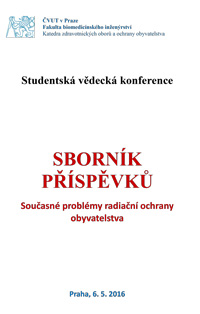
Studentská vědecká konference: Současné problémy radiační ochrany obyvatelstva
Sborník příspěvků
Editor Ing. Yulia Efremova, Ing. Jana Hudzietzová
Editor Ing. Yulia Efremova, Ing. Jana Hudzietzová
Vydalo České vysoké učení technické v Praze
Vydáno Kladno, listopad 2016 ISBN 978-80-01-05948-7
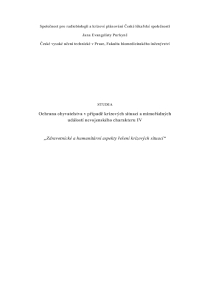
Ochrana obyvatelstva v případě krizových situací a mimořádných událostí nevojenského charakteru IV
„Zdravotnické a humanitární aspekty řešení krizových situací“
Ing. Jiří Halaška, Ph.D., PhDr. Mgr. Rebeka Ralbovská, Ph.D. a kol.
Recenzenti: prof. Ing. Gustav Šafr, DrSc., Mgr. Renata Havránková, Ph.D.
ČVUT v Praze
Vydání první, Praha 2016
© ČVUT, Fakulta biomedicínského inženýrství
ISBN 978-80-01-05982-1
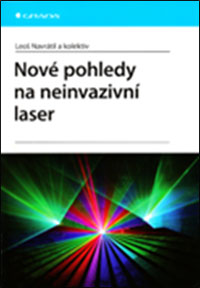
Nové pohledy na neinvazivní laser
Pavla Alexandrová, Yulia Efremova, Jana Hercogová, Hana Kolářová, Leonardo Longo, Alexandra Mateřánková, Leoš Navrátil (editor), Václav Navrátil, Pavel Poledňák, Jaroslav Průcha, Eva Remlová, Jozef Rosina
Grada Publishing, Praha 2015, ISBN 978-80-247-1651-0
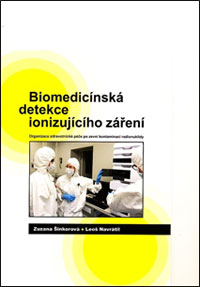
Biomedicínská detekce ionizujícího záření
Zuzana Šinkorová, Leoš Navrátil
České vysoké učení technické v Praze, Česká technika – nakladatelství ČVUT, Praha 2014, ISBN 978-80-01-05626-4
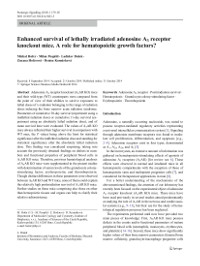
Téma: Úloha adenosinových receptorů v regulaci ionizujícím zářením poškozené krvetvorby
Vybraná publikace: Enhanced survival of lethally irradiated adenosine A3 receptor knockout mice. A role for hematopoietic growth factors? Michal Hofer, Milan Pospíšil, Ladislav Dušek, Zuzana Hoferová, Denisa Komůrková. Purinergic Signalling 11, 79-85, 2015
DOI 10.1007/s11302-014-9432-5
Pdf vybrané publikace a dalších článků na uvedené téma (celkem 35) k dispozici na vyžádání u autorů (hofer@ibp.cz).
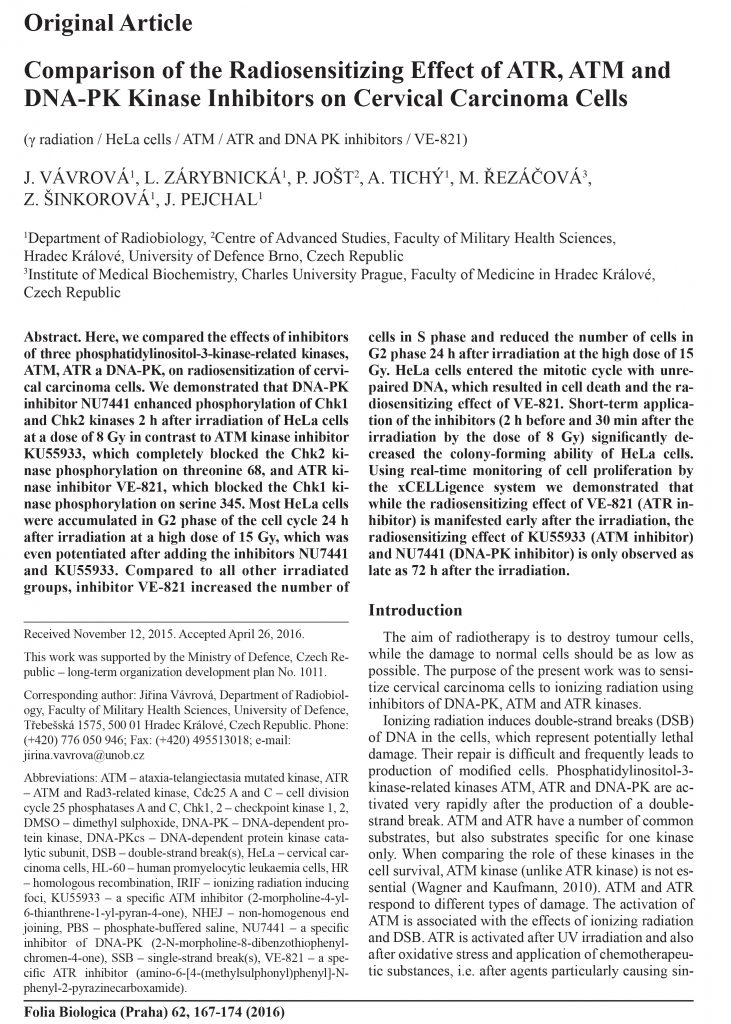
Comparison of the Radiosensitizing Effect of ATR, ATM and DNA-PK Kinase Inhibitors on Cervical Carcinoma Cells
Vávrová J, Zárybnická L, Jošt P, Tichý A, Řezáčová M, Šinkorová Z, Pejchal J.
Folia Biol (Praha). 2016;62(4):167-74.
For full text: jirina.vavrova@unob.cz
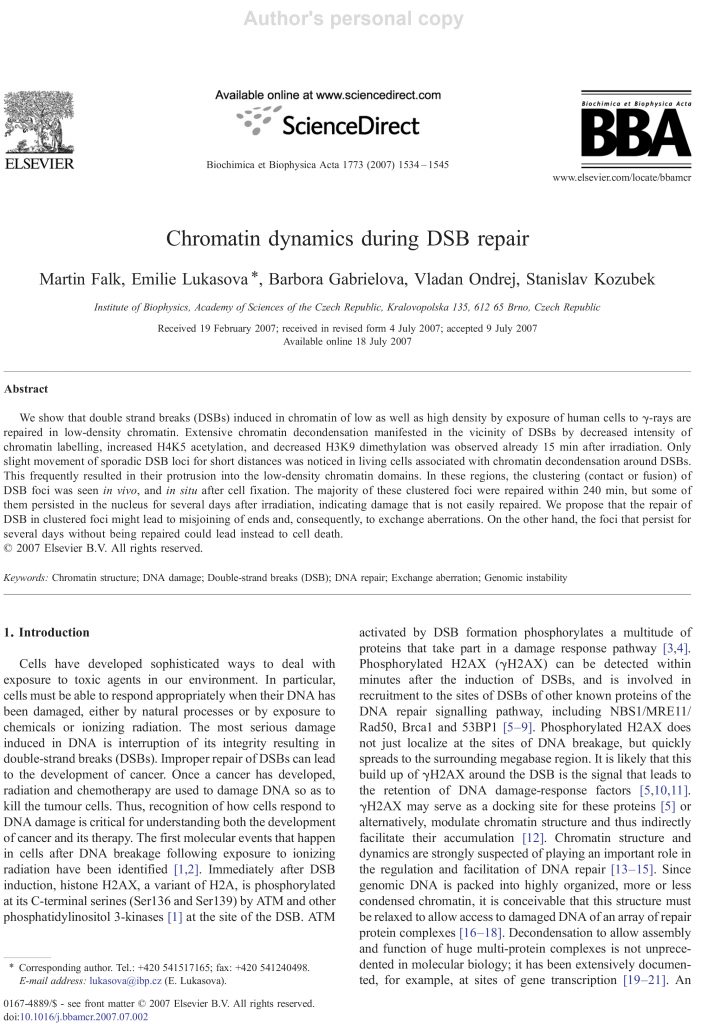
Chromatin dynamics during DSB repair.
Falk M, Lukasova E, Gabrielova B, Ondrej V, Kozubek S. Biochim Biophys Acta. 2007 Oct;1773(10):1534-45. (IF = 6.9)
In this work we show for the first time, on spatially fixed and live cells, how chromatin structure and nuclear topology influence (or even drive) the mechanism of how chromosomal translocations are formed
For full text: falk@ibp.cz
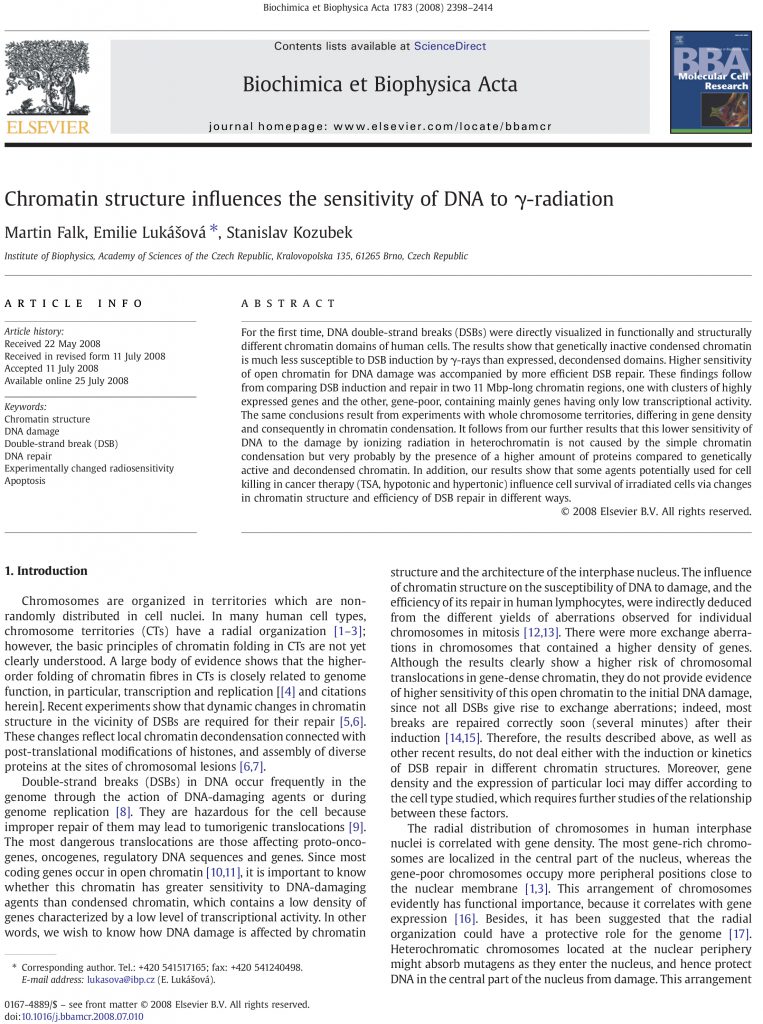
Chromatin structure influences the sensitivity of DNA to gamma-radiation.
Falk M, Lukášová E, Kozubek S.
Biochim Biophys Acta. 2008 Dec;1783(12):2398-414. (IF = 6.9) doi: 10.1016/j.bbamcr.2008.07.010.
In this paper we reveal how chromatin structure influences its sensitivity to induction of DNA double strand breaks (DSB) as well as the efficiency of DSB repair
For full text: falk@ibp.cz
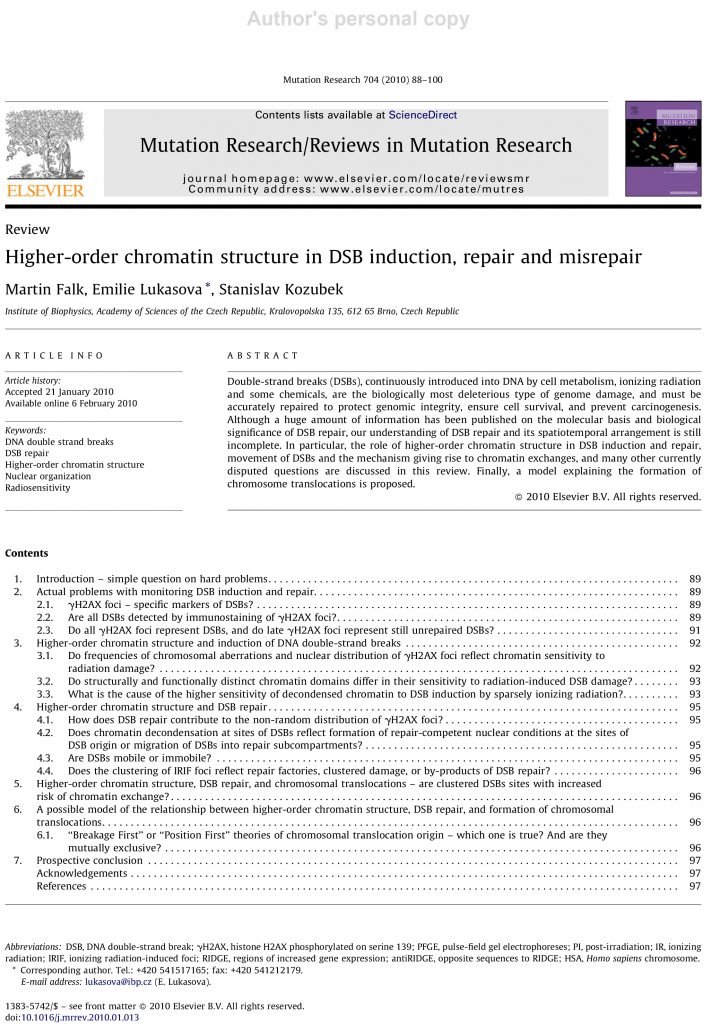
Higher-order chromatin structure in DSB induction, repair and misrepair.
Falk M, Lukasova E, Kozubek S.
Mutat Res. 2010 Apr-Jun;704(1-3):88-100. (IF = 7.1)
doi: 10.1016/j.mrrev.2010.01.013.
Review. In this review, supplemented with our results, we discuss on new findings in the field of DNA double strand break induction, repair, and misrepair in the context of higher-order chromatin structure
For full text: falk@ibp.cz
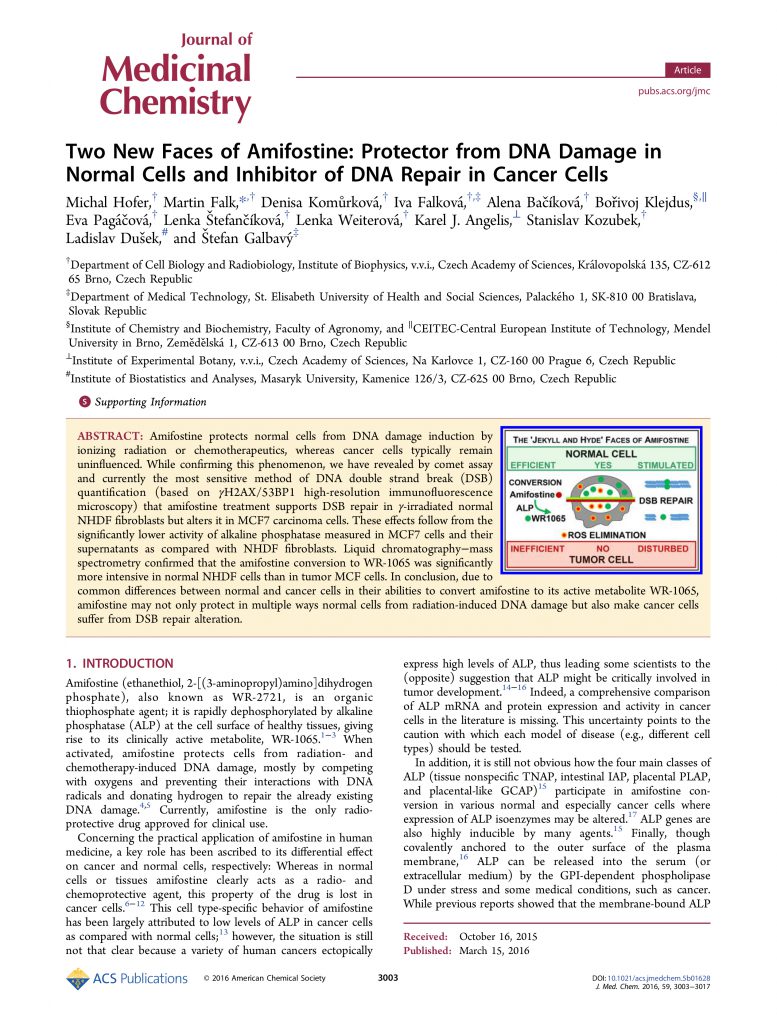
Two New Faces of Amifostine: Protector from DNA Damage in Normal Cells and Inhibitor of DNA Repair in Cancer Cells.
Hofer M, Falk M, Komůrková D, Falková I, Bačíková A, Klejdus B, Pagáčová E, Štefančíková L, Weiterová L, Angelis KJ, Kozubek S, Dušek L, Galbavý Š.
J Med Chem. 2016 Apr 14;59(7):3003-17. (IF = 5.45)
doi: 10.1021/acs.jmedchem.5b01628.
We readdressed the radioprotective effects of amifostine on normal and cancer cells, respectively, by using currently the most sensitive methods to detect and quantify DSBs. Amifostine not only protects normal cells from radiation (DSB) damage, it also negatively affects DSB repair in cancer cells.
For full text: falk@ibp.cz
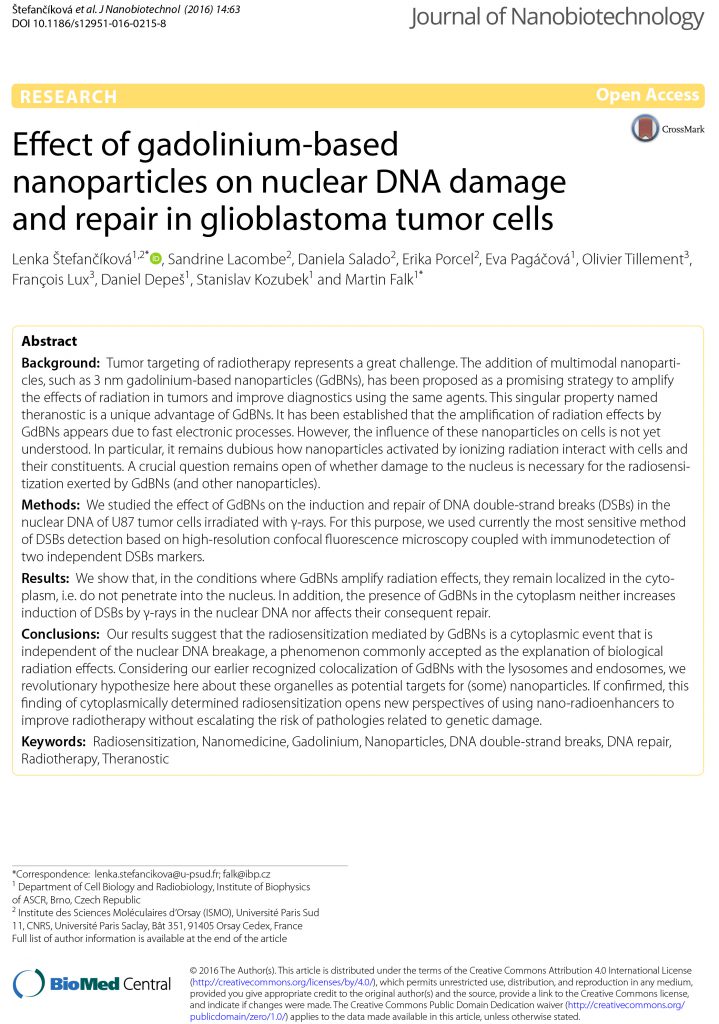
Štefančíková L, Lacombe S, Salado D, Porcel E, Pagáčová E, Tillement O, Lux F, Depeš D, Kozubek S, Falk M.
Effect of gadolinium-based nanoparticles on nuclear DNA damage and repair in glioblastoma tumor cells.
J Nanobiotechnology. 2016;14(1):63. doi: 10.1186/s12951-016-0215-8.(IF = 4.24)
Our results suggest that the radiosensitization mediated by GdBNs is a cytoplasmic event that is independent of the nuclear DNA breakage, a phenomenon commonly accepted as the explanation of biological radiation effects. Considering our earlier recognized colocalization of GdBNs with the lysosomes and endosomes, we revolutionary hypothesize here about these organelles as potential targets for (some) nanoparticles. If confirmed, this finding of cytoplasmically determined radiosensitization opens new perspectives of using nano-radioenhancers to improve radiotherapy without escalating the risk of pathologies related to genetic damage.
For full text: falk@ibp.cz
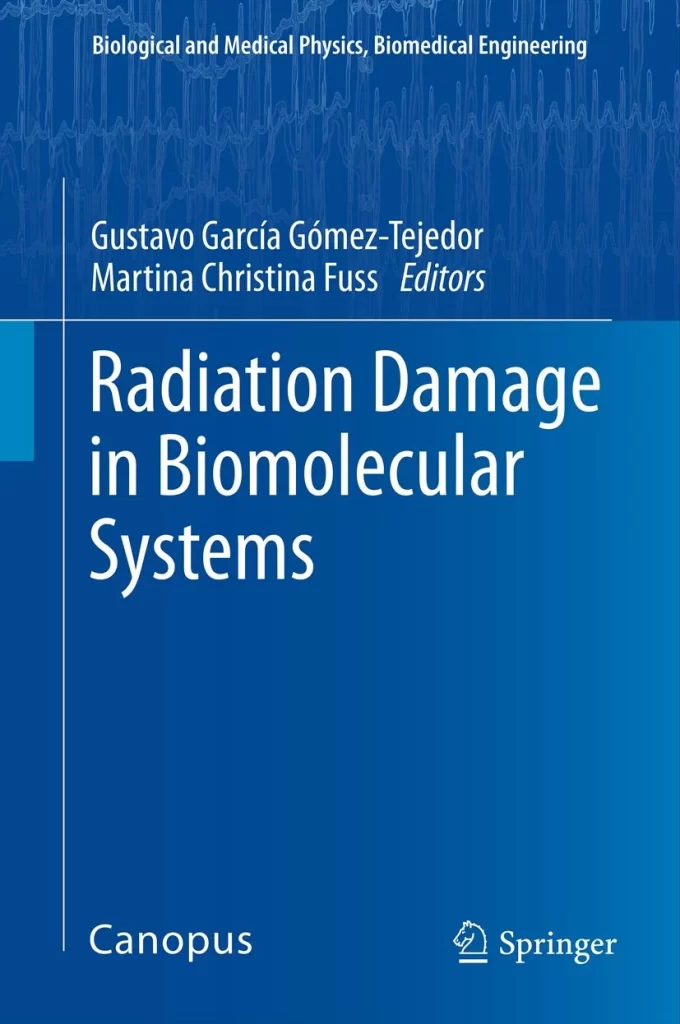
Radiation Damage in Biomolecular Systems
Falk M, Lukasova E, Kozubek S. Repair mechanisms of DNA double-strand breaks – Biochemical and Spatio-Temporal Aspects. In: Radiation Damage in Biomolecular Systems, Springer Science+Business Media (Eds.: G García, M Fuss), Dordrecht, Heidelberg, London, New York, 2012, p:329-359, ISSN 1618-7210, ISBN 978-94-007-2563-8, e-ISBN 978-94-007-2564-5, DOI 10.1007/978-94-007-2564-5_20.
Since the discovery of X-rays and radioactivity, ionizing radiations have been widely applied in medicine both for diagnostic and therapeutic purposes. The risks associated with radiation exposure and handling led to the parallel development of the field of radiation protection.
Pioneering experiments done by Sanche and co-workers in 2000 showed that low-energy secondary electrons, which are abundantly generated along radiation tracks, are primarily responsible for radiation damage through successive interactions with the molecular constituents of the medium. Apart from ionizing processes, which are usually related to radiation damage, below the ionization level low-energy electrons can induce molecular fragmentation via dissociative processes such as internal excitation and electron attachment. This prompted collaborative projects between different research groups from European countries together with other specialists from Canada, the USA and Australia.
This book summarizes the advances achieved by these research groups after more than ten years of studies on radiation damage in biomolecular systems.
An extensive Part I deals with recent experimental and theoretical findings on radiation induced damage at the molecular level. It includes many contributions on electron and positron collisions with biologically relevant molecules. X-ray and ion interactions are also covered. Part II addresses different approaches to radiation damage modelling. In Part III biomedical aspects of radiation effects are treated on different scales. After the physics-oriented focus of the previous parts, there is a gradual transition to biology and medicine with the increasing size of the object studied. Finally, Part IV is dedicated to current trends and novel techniques in radiation reserach and the applications hence arising. It includes new developments in radiotherapy and related cancer therapies, as well as technical optimizations of accelerators and totally new equipment designs, giving a glimpse of the near future of radiation-based medical treatments.

